System Adware Scanner 2010
Posted: December 16, 2009
Threat Metric
The following fields listed on the Threat Meter containing a specific value, are explained in detail below:
Threat Level: The threat level scale goes from 1 to 10 where 10 is the highest level of severity and 1 is the lowest level of severity. Each specific level is relative to the threat's consistent assessed behaviors collected from SpyHunter's risk assessment model.
Detection Count: The collective number of confirmed and suspected cases of a particular malware threat. The detection count is calculated from infected PCs retrieved from diagnostic and scan log reports generated by SpyHunter.
Volume Count: Similar to the detection count, the Volume Count is specifically based on the number of confirmed and suspected threats infecting systems on a daily basis. High volume counts usually represent a popular threat but may or may not have infected a large number of systems. High detection count threats could lay dormant and have a low volume count. Criteria for Volume Count is relative to a daily detection count.
Trend Path: The Trend Path, utilizing an up arrow, down arrow or equal symbol, represents the level of recent movement of a particular threat. Up arrows represent an increase, down arrows represent a decline and the equal symbol represent no change to a threat's recent movement.
% Impact (Last 7 Days): This demonstrates a 7-day period change in the frequency of a malware threat infecting PCs. The percentage impact correlates directly to the current Trend Path to determine a rise or decline in the percentage.
| Threat Level: | 10/10 |
|---|---|
| Infected PCs: | 23 |
| First Seen: | January 8, 2010 |
|---|---|
| Last Seen: | April 15, 2020 |
| OS(es) Affected: | Windows |
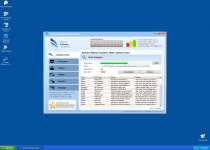 System Adware Scanner 2010 is rather irrelevant to its name because it is not a legitimate scanning application. System Adware Scanner 2010 is similar to other rogue anti-spyware programs such as Live Security Platinum and Security Shield 2012 that through the use of various unexpected popup notifications and bogus system scan results is able to persuade computer users into purchasing a full version of the System Adware Scanner 2010 app.
System Adware Scanner 2010 is rather irrelevant to its name because it is not a legitimate scanning application. System Adware Scanner 2010 is similar to other rogue anti-spyware programs such as Live Security Platinum and Security Shield 2012 that through the use of various unexpected popup notifications and bogus system scan results is able to persuade computer users into purchasing a full version of the System Adware Scanner 2010 app.
System Adware Scanner 2010 should never be used for the security needs of your system. System Adware Scanner 2010 does not have the ability to detect or rid your system of spyware, adware or other computer parasites. Removal of System Adware Scanner 2010 is recommended to prevent damage to system files.
Use SpyHunter to Detect and Remove PC Threats
If you are concerned that malware or PC threats similar to System Adware Scanner 2010 may have infected your computer, we recommend you start an in-depth system scan with SpyHunter. SpyHunter is an advanced malware protection and remediation application that offers subscribers a comprehensive method for protecting PCs from malware, in addition to providing one-on-one technical support service.
* See Free Trial offer below. EULA and Privacy/Cookie Policy.
Why can't I open any program including SpyHunter? You may have a malware file running in memory that kills any programs that you try to launch on your PC. Tip: Download SpyHunter from a clean computer, copy it to a USB thumb drive, DVD or CD, then install it on the infected PC and run SpyHunter's malware scanner.
Technical Details
File System Modifications
Tutorials: If you wish to learn how to remove malware components manually, you can read the tutorials on how to find malware, kill unwanted processes, remove malicious DLLs and delete other harmful files. Always be sure to back up your PC before making any changes.
The following files were created in the system:k4w4x7f7.sys
File name: k4w4x7f7.sysSize: 5.12 KB (5120 bytes)
MD5: d9a45a5a6f67d3773ffdd9851ae1bfdc
Detection count: 68
File type: System file
Mime Type: unknown/sys
Group: Malware file
Last Updated: April 15, 2020
k4w4x7f7.exe
File name: k4w4x7f7.exeSize: 790.55 KB (790557 bytes)
MD5: d9f4025d3ea3cb0a26dabcf6176c45c8
Detection count: 7
File type: Executable File
Mime Type: unknown/exe
Group: Malware file
Last Updated: April 15, 2020
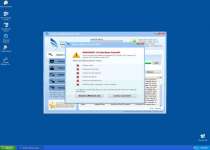
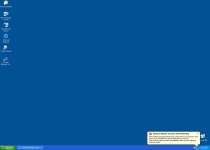
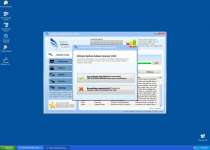
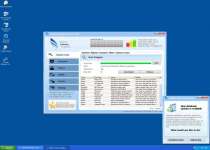
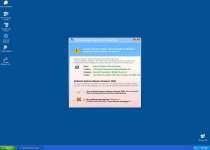
I have never understood why pepole spend money for McAfee, Norton, etc. that always slow down your computer before you even have a problem. In additional words, it's worse than the problem you are trying to prevent! Use the FREE firewall that comes with the computer, the FREE email spam remover and if you every really do get a virus, download a FREE virus remover. If you have a free trial place forward of McAfee for example and it expires, uninstall it and see how much quicker your computer becomes.